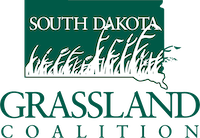The first bull catalog arrived in our mailbox shortly after Jan. 1, so it’s time to think about that aspect of beef production. Industry forecasters predict that demand for grass finished beef will increase over the next few years. The choices for cattle genetics are nearly unlimited, but what sort of genetics should one seek for a grass finishing program? Several producers shared what they’ve learned by experience.
Dan Rasmussen
A grass proponent said, “Every cow on grass protects grasslands no matter how they are finished.” Grass finishing fits his goal of utilizing the resources on his ranch while importing as little feed as possible. He has been selling into an established grass-finished market for 15 years with some in-state sales through Breadroot Coop as well as word of mouth. He looks for an animal that is efficient on grass in a harsh climate and still provides a good carcass. He’s found that older Angus genetics such as the Shoshone line work for him. A smaller-sized cow with low milk that easily puts on back fat suits his program. Low milk may slow calf growth initially but the genetics are there to grow after weaning. Rasmussen likes getting feedback on carcass quality from customers. “Grass finishing isn’t about a grid. It’s about returning customers,” he said.
Larry Wagner
Finished cattle on grass for several years. He aims to produce non-GMO beef with an eye to soil health. It took him 6-7 years to build a herd that works for his situation. He looks for cows with a large rumen capacity because of the amount of biomass they need to ingest in order to maintain condition while raising a calf. Today he uses frame score 3-4 Irish Black cows crossed with a Hereford bull. Irish blacks trace back to a Revolution Angus cow and a beef Friesian bull. Phenotypically they look short and squatty like the British breeds of 50 years ago. He sells some breeding stock, both cows and bulls. He supplements hay with field peas in the winter for energy and protein. Vetch instead of alfalfa is planted into hay ground for the nitrogen content. Consumers often ask about spray and fossil fuel fertilizer. They don’t want either. Wagner markets his grass-finished product at farmer’s markets and has built up a word-of-mouth clientele.
Roy Thompson
A young rancher from Akaska, SD learned about the relationship between healthy soils, healthy grass, and human health while searching for a better way to deal with Crohn’s disease. The results prompted him to change his livestock program to reflect that health connection. In the transition, he kept his existing Black baldy x Black Angus genetics but paid more attention to marbling and ribeye measurements as well as the age at which they start their finishing diet when buying bulls. His animals finish in the fall on cover crops which he thinks enhances flavor. Hardier grasses like winter wheat, triticale, rye, and legumes enable cows to graze on something green as long as possible. Winter feed is 3:1 prairie hay to non-GMO alfalfa. They launched their online marketing, Triple T Brand two years ago and are able to ship out of state.
“Where did my food come from? How was it raised?” are questions that Larry Wagner thinks aren’t going away. One of the problems of producing for a niche market on the Northern Plains is the distance between producer and interested consumer. Making the connection usually falls on the producer. Last spring’s pandemic caused meat shortage prompted consumers to seek out producers. Such consumer-producer relationships offer an excellent opportunity to educate others about the important role of good grass management.
Garnet Perman is a freelance writer and ranches with her husband, Lyle, near Lowry, SD
